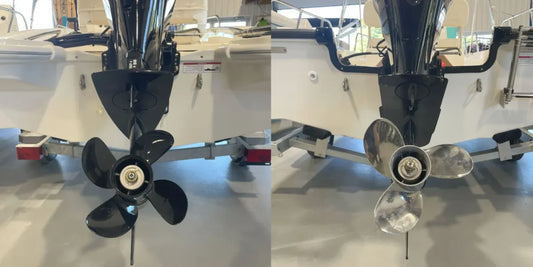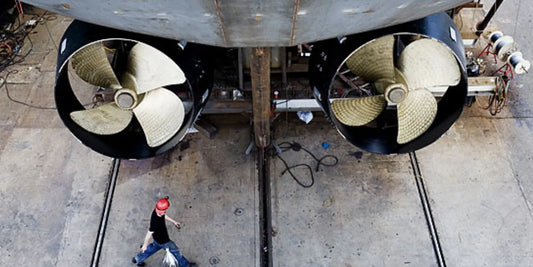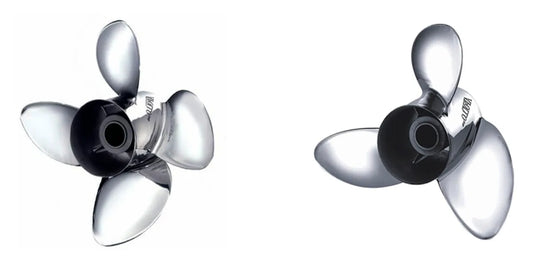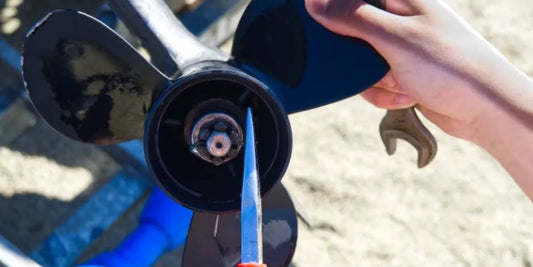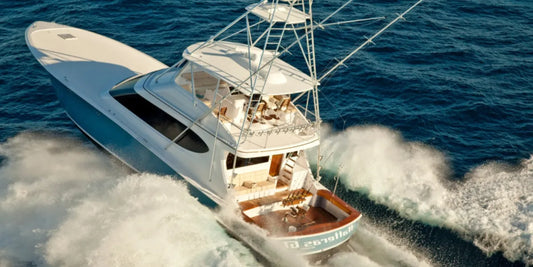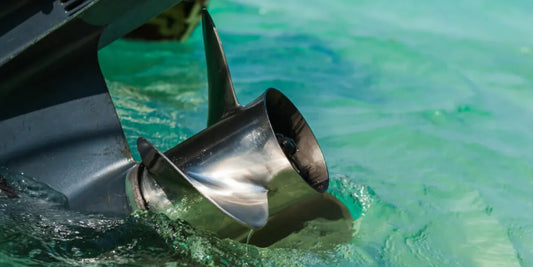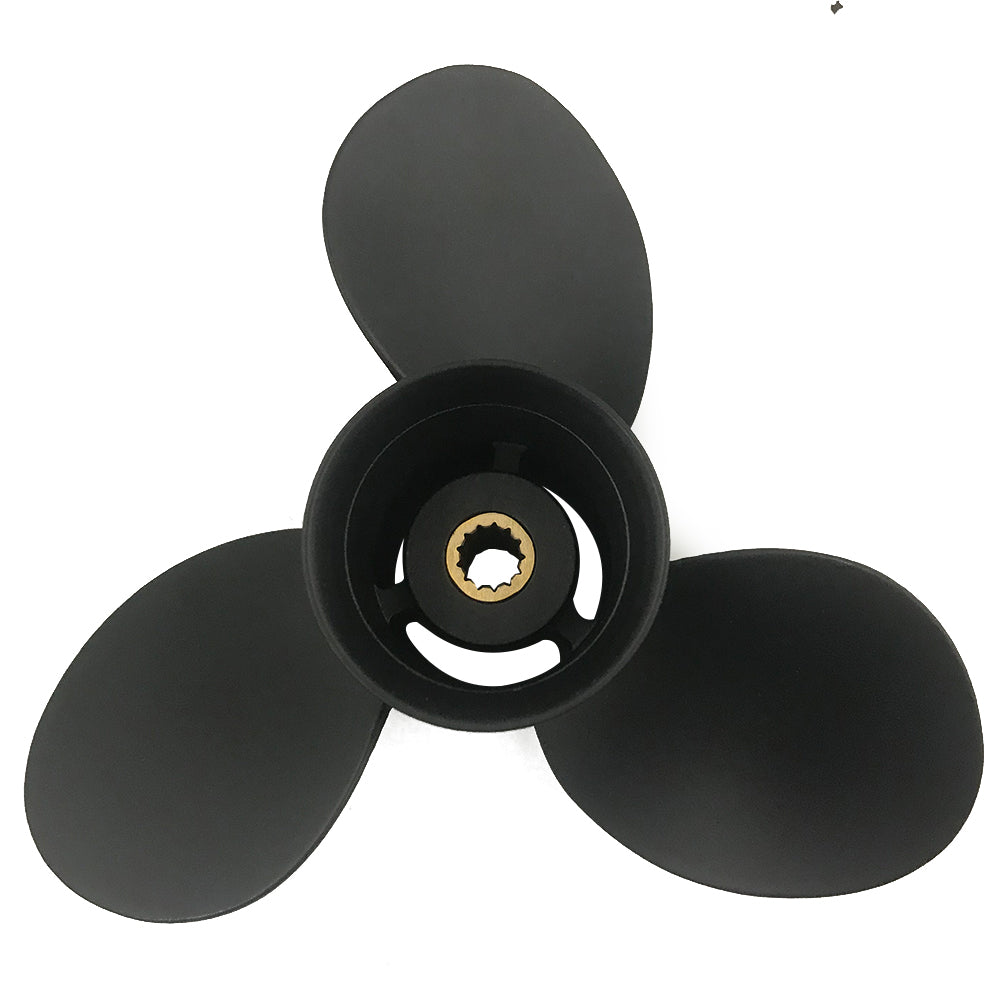The hard part in choosing a propeller for a boat is the conflict between performance, efficiency, and vessel compatibility. Under these conditions, a boat propeller calculator becomes your best friend. It exists to ease your decision, allowing you to concentrate on those trade-offs, for example, pitch, diameter, and material. On the following page, we will examine how to use a boat propeller calculator to enable you to improve boat performance, attain maximum fuel efficiency, and ensure a smooth ride. Whether a seasoned boater or a newbie to boats, this guide will walk you through practical considerations, allowing you to choose and make the most out of your new interest.
Understanding the Boat Propeller Calculator

What is a Propeller Calculator?
A propeller calculator is a unique tool meant to aid boaters and marine hobbyists pick the right propeller for their watercraft. By simulating various critical factors such as horsepower rating of the engine, weight of the boat, gear ratio, and desired speed, the calculator suggests the best propeller parameters, including pitch, diameter, and number of blades. Rightly chosen, a propeller can tremendously enhance and expedite a boat's performance, so it also gains in efficiency, ease of operation, and stability while gliding through the water.
Thus, current propeller calculators assist in propeller selection and can utilize sophisticated algorithms to ensure the highest accuracy. These programs are quite diverse; some consider differences in conditions for boating, such as water density (fresh or salt), load distribution during travel, or other conditions such as towing or racing. Such versatility is essential because even slight variations in size or pitch would affect the engine's efficiency and, finally, the vessel's performance. The calculator aids and provides a boat owner with the finalized recommendations to strike an optimal balance among speed, power, and fuel consumption for enjoyable and cost-effective boating.
Importance of a Propeller Calculator in Boating
A propeller calculator is an invaluable tool that transforms boating efficiency by integrating complex variables into precise recommendations. These calculations take into consideration important features, such as engine horsepower, boat weight, or the optimum RPM required for the propeller to match the exact specifications of the vessel. Correctly choosing the propeller enables fuel economy through a perfect adjustment between thrust and drag, thus minimizing operational costs. Balanced propelling arrangements also improve speed and smooth handling.
Recent data reinforce propeller calculator usage, implying a possibility of a 15-20% net improvement to propulsion efficiency for various types of watercraft. Whether in the calm waters of a lake or offshore under trying climes, this tool adapts the recommendations to such an environment, ensuring that boaters almost always operate at a standard performance and remain kind to the engine. Minimizing equipment wear and tear through data is another insight a propeller calculator can offer, making it an indispensable companion for the modern, cost-aware boater. Designed with a sense of simple intuitiveness and backed by scientific data, they allow a person to make choices that translate into a more blissful experience on the water.
Key Features of a Boat Propeller Calculator
Accurate Performance Analysis: Using a boat propeller calculator, the user can accurately check performance metrics such as RPM (revolutions per minute), speed, and slip. These insights allow the boater to fine-tune the system to suit the operational conditions best for greater fuel economy and smoother operation.
Customizable Recommendations: By inputting distinct factors for the setup, such as boat weight, engine type, and desired speed, the calculator generates custom proposals for propeller size and pitch, ensuring that they fit the unique criteria of an individual's boating condition, thus providing better handling and reliability.
Support Different Engines: Considering different engine configurations from outboard to inboard presentations, it aims to cater to a pervasive boating spectrum. Such is versatility for this tool: being able to make a seamless change independent of boat manufacturer or type.
Reduces wear and tear: Proactive use of propeller calculators to find the setups that cause the least stress on the engine and propeller reduces further maintenance costs and increases the equipment's life, ultimately saving money.
Easy-to-Use Interface: In today's world, propeller calculators are designed intuitively with a simple plan for inputting and outputting data. These include adequate visual aids, such as graphs and charts, making it easy to communicate the results to fellow boaters, regardless of their proficiency level, and apply them effectively.
Refined Calculations of Speed and Efficiency: It evaluates how propeller choices affect speed and efficiency to maximize them. Hence, faster and more efficient fuel utilization makes any boat trip more fun and economical.
With these features, boaters can now make confident decisions based on their acquired data to maximize their floating time while protecting their investments.
How to Use the Boat Propeller Calculator

Step-by-Step Guide to Inputting Data
Boat Information Collection: Begin by enlisting the basic info about the boat, including its make and model, engine type, and horsepower rating. This information is the basic data that helps in the calculation and recommendation being made.
Measurement of Variables: Measure accurately the weight, hull type, and number of passengers usually on board. These can directly affect performance, so they must, therefore, be correct.
Input Propeller Information: If you are upgrading or comparing propeller performance, input the current propeller diameter, pitch, and material. This will help the calculator determine whether the proposal makes sense.
Set up Operating Conditions: Specify varied water scenarios you encounter, such as calm in a lake and choppy in the sea. Other factors, like elevation and average cruising speed, should be included to provide more fine-tuned recommendations.
Input Target Goals: Clearly define your performance goals: maximum speed, fuel efficiency, or heavier towing. These options would assist in aligning the output with your expectations.
Study the Results: After inputting all the information, check the calculator for results. It would become helpful to see the suggested propeller sizes and predicted metrics such as speed, fuel consumption, and engine load.
When users enter thorough and accurate information, they can exploit the full power of the Boat Propeller Calculator to make viable, data-supported decisions.
Finding the Right Propeller Size
Choosing the right propeller size is one of the most important steps in ensuring optimal boat performance. It requires a technical understanding as well as accurate data. Factors such as boat weight, engine specs, and intended usage must be considered as the basis for a suitable size choice. The correct propeller size directly affects speed, fuel efficiency, and winding.
Consider diameter and pitch- they are the two elementary metrics used to ascertain how a propeller performs. The diameter, which is half of the width of the circle drawn by the rotating blades, reasonably determines how well the prop moves water. Pitch, too, is an important factor, theoretically describing the distance which would be covered by the propeller in one revolution in the absence of any slippage, via which thrust and speed are expressed. Whether these two are well balanced can provide maximum energy transfer, thus minimizing engine strain.
Other considerations include the propeller's material makeup, the rake angle, and blade count, which influence durability and performance in different conditions. Today, with the advancement of tools and insight into technology, a boat owner can select the propeller diameter for maximum satisfaction and efficiency through proper decision-making.
Interpreting the Results from the Calculator
Understanding the calculator's output is essential, as it results in the most crucial decision for propeller selection. The data contains some thrusts, speeds, and efficiencies peculiar to your boat and engine settings. By evaluating these parameters, boat operators discover unforeseen areas for improvement related to fuel consumption, cavitation, or better maneuvering under any condition.
Ensuring its support for optimal operation based on the modern standards and data analysis in choosing diameters, pitches, or RPM, a smooth operational approach has been formed, and the selection process remains at odds with precision and confidence for any boat operator.
Factors Influencing Propeller Selection

Understanding Boat Weight and Its Impact
Boat weight is vital in determining propulsion, efficiency, and overall performance. A heavier boat demands a propeller capable of producing much thrust and load handling to speed up and maintain stability. Conversely, a lighter boat can take advantage of a finer-pitch propeller for faster acceleration and higher top-end speed.
In other words, studies show that with an additional weight of 100 pounds, a boat's efficiency tapers off by about 2-3% due to drag and resistance. This highlights why the ultimate prop selection should cater to the weight specifics of the vessel in question, thereby considering both the bare hull weight and loads such as the fuel, passengers, and gear. A proper number of blades and the corresponding diameter will ensure that the propeller does not lose efficiency when conditions vary, thereby creating more strain on the engine. For their propulsion system's longevity and effectiveness, boat operators must know and consider how the weight affects it.
Calculating the Ideal Prop Size for Your Boat
Selecting the best propeller size for your boat requires a combination of technical know-how and practical considerations. First, check your engine's recommended wide-open throttle range, usually found in the manufacturer's engine manual. The propeller is crucial for enabling the engine to run within this range for efficiency and longevity.
Other considerations include your boat type, load capacity, and intended use. For example, watersport boats require a propeller with a low pitch for a quicker onset of speed. On the other hand, cruisers need high-pitch propellers to move at a reasonable speed and conserve fuel. An expert connects the prop's pitch with the engine's RPM to keep working in an optimum range, all the way between power delivery and fuel economy.
There are also the diameter and blade count to keep an eye on. A larger diameter prop is indicated for heavier boats and slower speeds since it produces more thrust. On the other hand, smaller props go better for lighter boats and high-speed applications. Three blades are the default for general-purpose use since they can balance speed and efficiency well; meanwhile, four- or five-blade props offer smoother operation and greater thrust for heavy towing or carrying rough water.
By considering all these factors and correlating everything with your boat specifications, you ensure maximum propulsion efficiency, minimum engine strain, and a more enjoyable boating experience.
Advanced Considerations for Propeller Design
Where size and blade number are general considerations affecting the choice or modification of a propeller, further advanced considerations set in. In terms of the material used, stainless steel propellers are best for life duration and performance, as well as high-performance boats or harsh environments. Aluminum propellers, in contrast, will be cheaper; thus, one with a budget may have to opt for that.
Moving on to blade geometry: in principle, rake and cup. High rake construction invariably favored good performances at high speeds and good handling in rough water, while cupping would, among other things, reduce slippage and increase connection with the water. Variable pitch propellers are gaining traction, setting pitch dynamically to optimize performance at various speeds and loads.
Besides this, the hydrodynamic modeling and computational fluid dynamics (CFD) advances have allowed engineers to design propellers more accurately: they simulate water flow around the blades to decrease drag and increase efficiency. On the other hand, new designs will prove of interest for anyone using their vessel with fuel economy or environmental consciousness in mind, featuring noise reduction and cavitation minimization for quieter operations and lesser engine wear.
That being said, keep in mind what suits your style of boating—say, high-speed racing, fishing, or just casual cruising. Properly pairing the right propeller with your vessel and activity will keep you in good standing regarding performance, energy efficiency, and life expectancy.
Common Recommendations for Propellers

Best Propeller Recommendations for Yamaha Boats
Choosing the right propeller for your Yamaha boat is critical for optimum performance, efficiency, and longevity. Here are some top choices based on popular styles, proven performance, and applicability to a variety of Yamaha engines:
Yamaha Reliance Series SDS Propeller: The Yamaha Reliance Series SDS (Shift Dampener System) propeller is designed for mid-sized outboards, providing smooth and quiet shifting with less vibration. It has good acceleration with fine top-end speed, making it a fairly versatile choice for recreational boats. The propellers are made of stainless steel, assuring their longevity and reliable performance under rough conditions.
Yamaha Saltwater Series II Propeller: The Yamaha Saltwater Series II propeller is optimized for heavier boats, such as offshore fishing boats. It provides greater thrust and grip under trying water conditions and actually improves fuel efficiency over the other propellers, so it is suitable for long excursions and high-speed stability.
Yamaha Talon Pontoon SDS Propeller: Specifically made for pontoon boats, the Yamaha Talon Series provides greater control and quieter operation because of unique blade geometry and dampening design. It creates high lift, so the operation is smooth even in heavier setups usually found in pontoon configurations.
Yamaha Turbo Hot Shot Propeller: This top choice for small Yamaha boats and light runabouts ensures rapid acceleration and ultimate top-end performance. The finer design enables tighter turns and better movements, hence perfect for water skiing or tubing.
Yamaha FX4 Propeller: The Yamaha FX4 Propeller advances maximum power transfer efficiency for boats under various load conditions with bigger Yamaha outboard engines. The FX4 Pro's four-blade configuration ensures higher thrust and better mid-range and cruising speeds, which is especially beneficial for bigger multi-purpose crafts.
A propeller must always be weighed against essential issues like engine horsepower, the type of boat, and expected use. Testing various choices from Yamaha's optimized propeller series can allow you to fine-tune your boating experience while easing engine strain and improving long-term reliability.
How to Choose a Suitable Prop for Different Boat Types
A proper choice of the propellers for the boat determines the vessel's best performance, efficacy, and reliability. Some straightforward guidelines help you decide based on the boat's type and unique requirements:
Fishing Boats: Fishing boats typically demand precision and stability, especially during trolling or in shallow waters. In such ships, only props with low speed control and maneuverability should be considered. The stainless-steel prop is a fine choice for durability, and a lower-pitch propeller smokes out operations at slower speeds, thus consuming less fuel during long fishing trips.
Recreational or Runabout Boats: These boats are always built for speed and versatility, generally used to tow water skiers or cruise on calm lakes. For this exalt, a higher pitch prop ensures the highest top speed, which provides the thrills necessary for water sports. Aluminium props are cheap and work well to serve these boats on an ad hoc basis. Efficiency can be further enhanced by modifications such as cupping to reduce slippage.
Pontoon Boats: Pontoon boats tend to emphasize comfort and carrying capacity instead of speed, as large numbers of passengers are often transported. Large diameter propellers that perform efficiently under heavy loads are better for these boats. Cruise smoothly with a three-blade propeller of medium pitch, and fuel efficiency is erratic when cruising long distances on lakes or rivers.
High-Performance or Speed Boats: High-performance boats select propellers designed for maximum acceleration and top speed-all stainless steel with high rake angle and thin blades to maximize top speed levels in open water by reducing drag. Propellers with a newer four or five-blade design will provide better grip and enhanced stability at very high speeds.
Cruisers and Large Vessels: Cruise boats and larger boats generally strive for steady output and a healthy engine over time. Choose a propeller for heavy-duty use, complete thrust, and fuel efficiency. Four-blade or even five-blade stainless steel propellers will give better vibration reduction and overall improvement in balance. Also, be sure to refer to the engine manual for the diameter and pitch recommended by the boat to preserve its longevity and power.
A well-fitted propeller can enable better maneuvering, fuel economy, and engine longevity for any boat owner. Testing various configurations within the recommended specs can further tailor the boating experience to specific waterway conditions and preferred usage patterns.
Using the Calculator for Accurate Propeller Recommendations
A propeller calculator is quite important to determine the correct propeller specifications for a given boat. This sophisticated tool considers key variables, including the engine's horsepower, engine RPM, gear ratio, and the boat's weight, to suggest the correct diameter and pitch combination. Inputting these given parameters will provide you with a tailor-made solution to your boat's performance needs. The recommended combinations aim at efficiency-trading towards higher top speed, better fuel economy, or even smoother handling in the water.
Another benefit of cost-cutting hours would be that various simulations can select the best from all choices under certain conditions and situations. Thus, you may fine-tune the suggestions further: differences between saltwater and freshwater, load conditions, utilization types of activities, e.g., fishing, watersports, or cruising. Incorporating such complex parameters leads to a composite suggestion in which the prop adjustment will improve operational performance. In contrast, the operational life of your engine and drivetrain will surely benefit from it to a large extent.
An invariable practice of an erroneous assessment of propeller specifications, particularly after some engine upgrade or change in typical use, would be a neglected implementation for a boat owner who wants to unlock the full potential of their vessel. With such criteria, application areas are adjusted to ensure the boat has been inducted into its glory of practical operation, elevating to an all-around boating experience.
Troubleshooting Common Issues with Propeller Calculators

Common Input Mistakes to Avoid
Using a propeller calculator, I find that the accuracy of input data is paramount to achieving reliable results. It is a standard error to enter an incorrect weight for the boat. The total weight of the vessel, including fuel, gear, passengers, and any other loads, must be considered. Disregarding any of these would result in miscalculations and performance of a substandard propeller, putting the entire boat under an inefficient balance.
I have noticed another common problem in the RPM range given. This is usually set by the manufacturer, ensuring that when I select the engine RPM for the calculator, it needs to be the same as what is listed as the optimal RPM range for the engine. I always make sure that I check it in the engine manual before choosing it for the tool.
Leaving the current environmental and usage conditions overlooked would offset the results. Ignoring considerations such as usual water conditions or whether the primary application is towing or cruising will never ensure that you get proper recommendations. I make it a point to consider these variables so that calculations always reflect real-world usage. Hopefully, avoiding these common pitfalls, using the propeller calculator helped me get the most accurate and practical advice.
Understanding Calculator Limitations
I've found that a key limitation would be their reliance on theoretical data instead of real-world considerations. Most of these tools would function based on averages and assumptions; they may be incapacitated in dealing with special situations such as abnormal water currents, load changes, or unstable weather conditions. One example is that I don't always consider whether I'll tow heavier loads more or cruise lighter. If I don't do so, those recommendations might miss the mark. That is why I always ensure my inputs are as close as possible to the actual conditions I expect.
Another limitation is the danger of inputting outdated data into some calculators. Given that propeller design and performance data change over time, a performance recommendation from a calculator that has not been kept up to date may be wrong or less useful. To address this, I often cross-reference data through several sources and ensure that the calculator is well equipped with the most up-to-date knowledge. The calculator is more of a guide than an answer.
Lastly, I understand the importance of interpreting calculator output in context. Recommendations may seem fine when tested on paper but require adjustments in real-world testing. Knowing how to analyze and fine-tune these results can sharpen performance while avoiding the pitfalls of oversimplification; keeping this in mind, however, setting distinctions turns theoretical numbers into observable, practical benefits.
When to Consult a Professional for Propeller Selection
When selecting the right propeller, there are times when consulting a professional is not just helpful but necessary. If you don't know the specific requirements of your vessel, such as diameter, pitch, or even material for your propeller, then the expert's input will save you time and money. Professionals understand performance factors that are sometimes difficult to gauge, including the mixture of engine compatibility, weight distribution, and the influence of local environmental factors like water current or altitude. With their great experience, they can match a propeller with your vessel for the highest efficiency, performance, and durability possible.
The other situation is when you want to consult an experienced technician with advanced or specialized requirements. For example, working toward an altered vessel for increased speed, heavy weight, or special operations such as towing, pulling, or racing could create a wrong propeller choice, manifesting in poor performance or engine damage at worst. The expert will ensure accurate measurement of these factors and ultimately recommend the right product.
Otherwise, you should also consider taking the services of the professionals when you experience some problems relating to performance, such as reduced vessel speed, poor use of fuel, or higher-than-usual stress on the engine. These signs might warn you that an ill-suited propeller or an already worn-out one does not suit your configuration. Then the professional will ascertain whether you need a repair, a replacement, or a different configuration altogether. By exploring the secrets of propellers with an expert, I can confidently make decisions that guarantee the best in my vessel's performance and avoid costly mistakes.
Reference Sources
- Your Ultimate Boat Propeller Calculator Guide - Captain Marine
- Free to Use Propeller Sizing Calculators - Vicprop
- Prop Slip Calculator - Mercury Racing
- Boat Prop Calculator - Captain Marine
- How to Measure a Boat Propeller - NBSS
Frequently Asked Questions (FAQs)
1. What is a boat propeller calculator, and how does it work?
A boat propeller calculator is a utility that assists boat owners in determining the most favorable propeller using critical performance factors. Once one enters engine horsepower, boat weight, gear ratio, and speed into the calculator, it inspects whether a specific diameter, pitch, or material propeller will give the best efficiency and performance given those parameters. In short, it maximizes the propeller-retail configuration for your boating needs.
2. Why is it so important to use a boat propeller calculator?
A boat propeller must allow the highest speed, fuel efficiency, and engine performance; a calculator will factor this in. When a propeller mismatch occurs, whether by pitch or diameter, it eliminates the relatively easy chance of poor performance, lessens the strain on the engine, reduces high fuel consumption, and prevents eventual damage.
3. Is it an all-inclusive calculator for the different boat types?
Yes. Calculators are versatile in nature; they work for boats of numerous types, including fishing boats, pontoon boats, speed boats, and even sailboats. The essential part is ensuring you possess accurate data concerning your boat's specifications and performance goals to feed into the tool.
4. What are some factors I should keep in mind while using a propeller calculator?
Some of the factors are the engine's RPM range, the boat's load, proposed utilization (e.g., towing or high-speed cruising), and waterway conditions like freshwater versus saltwater usage. These parameters permit the calculator to match you with the most efficient prop for your individual application.
5. How often should I repay my prop selection?
It is wise to check prop selection whenever there is a significant change in how you set up or use the boat. For instance, if you put in other extra equipment or changed the passenger load or changed the use of the boat itself (from recreational to competitive), you ought to use the calculator once more and see if the selection still suits the current situation.
6. Are there limitations to boat propeller calculators?
Besides making excellent recommendations within seconds of calculating, they depend on you entering the right information. Wrong specifications on your boat or performance goals would lead to somewhat precise recommendations. Then, there may be other factors, like water conditions or personal preferences, requiring further tweaking from an expert.


